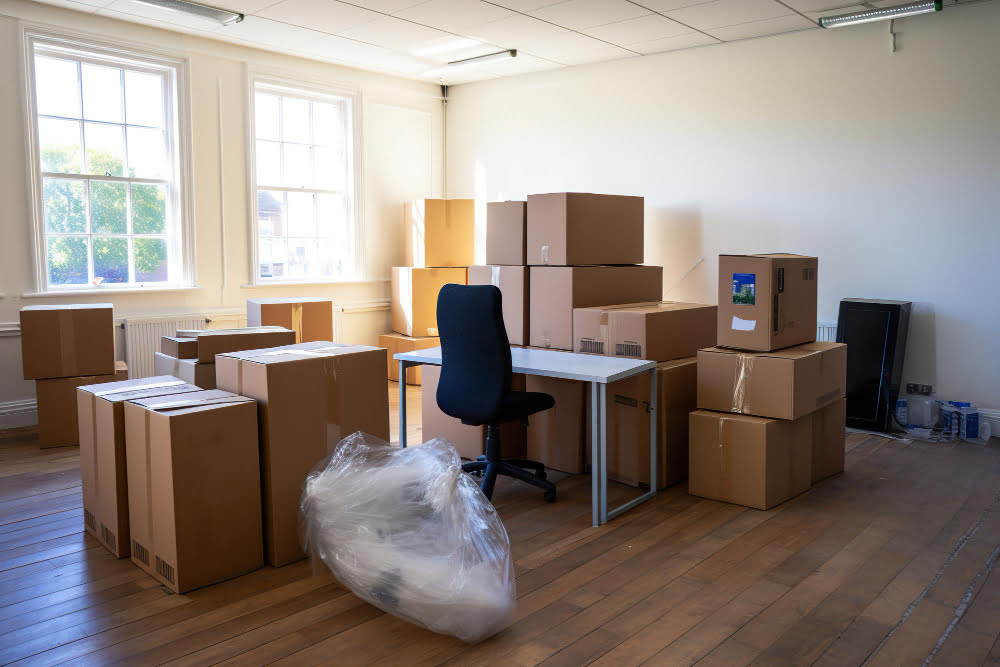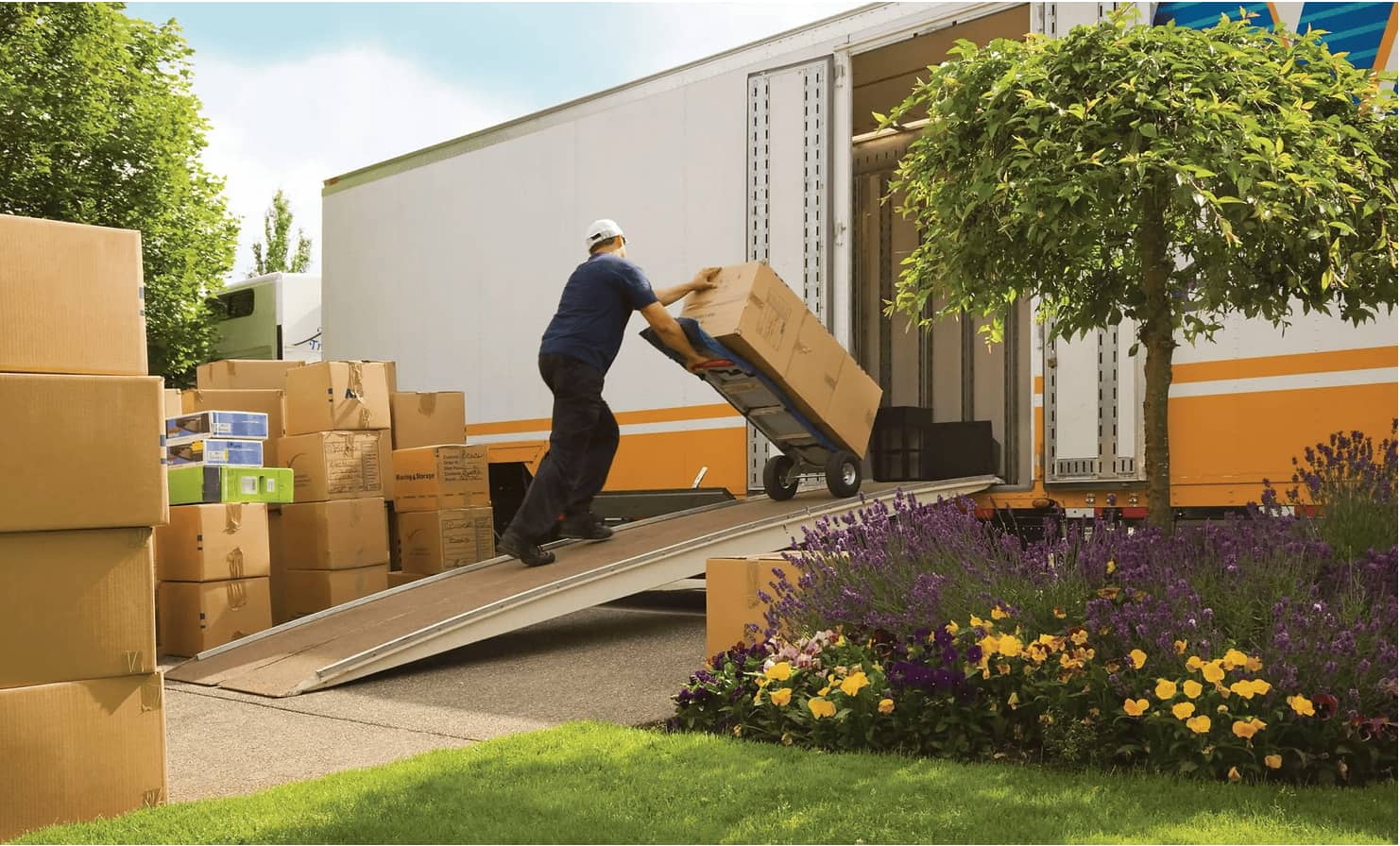Moving an office is an intricate process that demands meticulous planning and precise execution. Businesses face the challenge of transporting their physical assets to a new location while ensuring minimal disruption to their operations. A successful office move involves coordinating various elements, from logistics and employee communication to IT infrastructure and workspace optimization. Let's discover how do you move an office successfully?

Companies must approach the task with a strategy that encompasses every phase of the transition. Clear communication with all stakeholders, along with a detailed timeline, serves as the foundation for a seamless move. Moreover, allocating resources effectively for tasks such as packing, labeling, and setting up the new space is critical. One must not overlook the importance of budgeting and cost control to guarantee a cost-effective relocation.
Organizing an office move also includes preparing for the upscaling of a hybrid workplace, which may be part of the motivation behind the relocation. With the rise of flexible work arrangements, moving to a new office can be an opportunity to optimize the work environment to support both onsite and remote employees. The ultimate goal is to ensure that once the office move is complete, the business is positioned in a space that enhances productivity and aligns with its long-term objectives.
Preparing for Your Office Move

An office move is a significant undertaking requiring meticulous preparation. Two pivotal steps are assessing the current office space and devising a detailed relocation plan that serves as a blueprint for the entire process.
Assessing the Current Office Space
Before embarking on an office move, it is crucial to thoroughly examine the current space. The assessment should include an inventory of all assets and an evaluation of the layout to identify what will move to the new location. Companies should consider the existing conditions, such as size and functionality, to ensure the new space meets their requirements. This phase is about understanding what works, what doesn't, and determining the space needed in the new office.
Creating an Office Relocation Project Plan
A well-structured office relocation project plan is the foundation for a successful move. Organizations should create an exhaustive checklist that outlines every stage of the move. A useful relocation plan can manifest as an office relocation project plan template in Excel or a PDF format, offering a step-by-step guide encompassing:
- Budget preparation: It entails allocating funds for all aspects of the move, from professional movers to new furniture.
- Timeline development: Setting realistic deadlines for each stage, ensuring minimal disruption to operations.
- Communication strategy: Outlining how to keep employees informed and involved throughout the move.
- IT infrastructure: Planning for the transfer of critical data and minimizing downtime during the transition.
Each step in the relocation plan should have responsible parties assigned and be accompanied by a realistic timeframe, providing clear milestones and accountability throughout the move.
Organizing the Move

To move an office successfully, meticulous planning, clear communication, and strategic execution are essential. The following subsections outline the vital steps to organize a seamless transition to a new office location.
Developing a Timeline and Checklist
Timeline Creation: A detailed timeline is the backbone of any office move, ensuring every task is completed in an orderly fashion. It should include key dates such as lease commencements, moving day, and final inspections, as well as deadlines for tasks like packing and technology setups.
Checklist for Success: A comprehensive office move checklist should be developed to track the completion of tasks. It would typically consist of:
- Inventory documentation
- Packing materials acquisition
- Utilities setup at the new location
- Final walk-throughs and cleaning
Communicating with Employees
Clear Information Sharing: Regular updates should be communicated to employees to keep them informed about the move's progress and their responsibilities. Formal announcements and meetings will help in maintaining transparency and addressing any concerns.
Employee Responsibilities: Employees need to be given specific instructions for the move, such as:
- Securing personal and sensitive information
- Labeling their belongings and equipment
- Understanding their role on moving day
Designing the New Office Layout
Space Planning: Efficient use of space is crucial. The new office layout should be designed considering factors like team interaction, workflow, and potential for growth.
Technology and Infrastructure: Planning the placement of IT infrastructure and ensuring the availability of necessary technology resources at the new office is critical to minimize downtime. This includes setting up internet access, phone lines, and IT systems before the move.
Executing the Office Move

Executing a successful office move requires meticulous planning, coordination, and execution. Attention to detail in hiring movers, managing inventory, and establishing the new workspace ensures a seamless transition with minimal disruption to business operations.
Hiring Professional Movers
Professional movers play a crucial role in the efficiency of an office move. They are skilled in handling office equipment and can significantly reduce the risks associated with moving. It is essential to:
- Choose a reputable moving company with experience in office relocations.
- Verify that they are licensed and insured to protect your assets during the move.
- Schedule the move well in advance to ensure availability and allow time for any necessary preparations.
Packing and Inventory Management
Proper packing and inventory management are vital for tracking all assets and mitigating any losses or damage. One should:
- Clearly label all boxes and furniture with their destination in the new office layout.
- Maintain a detailed inventory list that accounts for all items being moved.
- Use sturdy packing materials and techniques to protect valuable equipment.
Setting Up the New Office
The final step is to establish the new office in a way that allows immediate resumption of work. To accomplish this effectively:
- Coordinate with IT staff to set up and test technology infrastructure with minimal downtime.
- Arrange furniture and equipment according to the preplanned office layout.
- Ensure that essential services such as internet and phone lines are operational prior to the move-in date.
With careful attention to these elements, an office move can be carried out smoothly, paving the way for a fresh start in a new location.
Post-Move Strategies
After a successful office relocation, the emphasis shifts to fine-tuning the new workspace and learning from the experience to streamline future moves. These post-move strategies are vital to ensure the business operations return to full productivity swiftly and to capture insights for continual improvement.
Addressing Post-Move Adjustments
Post-move adjustments often involve troubleshooting immediate issues that affect the day-to-day operations. They should prioritize setting up critical infrastructure such as IT systems and telecom services, ensuring they're fully operational. It is also important to:
- Organize the workspace: Arrange furniture and equipment to match the planned layout.
- Check accessibility: Confirm that all accessibility requirements are met for staff and clients.
- Test all equipment: Computers, printers, and other office tools should be tested to identify any damage or issues resulting from the move.
- Adjust to new workflows: Monitor if the new environment affects current workflows and make necessary adjustments.
Moreover, relocating can disrupt familiar routines, so they must provide clear signage and guidance to help staff navigate the new office.
Gathering Feedback for Future Moves
Gathering and analyzing feedback post-relocation is essential to refine the office moving process:
- Conduct a survey: Distribute a feedback survey to all employees to gather input on the relocation process.
- Evaluate the move: Assess what went well and what didn’t, especially focusing on budget adherence and downtime experienced.
This feedback is invaluable and should be used to develop a knowledge base for future relocations.
Communication with the moving team and employees should be ongoing to identify any challenges faced post-move and to ensure that every team member is comfortable and productive in the new setting.
MOVING FORWARD - YOUR WAY TO MOVE FORWARD
At Moving Forward - the best moving company in Charlottesville, we offer great moving services at prices that won't break the bank. Our team is all about making your move easy and stress-free. We, as movers in Charlottesville, take care of your stuff like it's our own and handle everything with care. Whether you're moving nearby or out of state, our rates are affordable for everyone. Choose Moving Forward - the best out of state movers in Charlottesville for a smooth and budget-friendly move to your new place. We're here to make your moving experience a breeze!
For quotes, contact us to get better deals.










